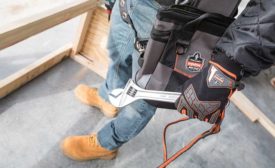Featured on Home Page
Seven elements of a successful hearing conservation program
Cut the noise
September 1, 2017
Electrical workers need head & neck FR protection
Ensure 360 degrees protection
September 1, 2017
Implementing a dropped objects prevention plan
A roadmap for reducing risks
September 1, 2017
Chemical labeling requirements vary from country to country
‘Global’ does not mean 'universal'
September 1, 2017
There’s more to fall protection than wearing PPE
Identify, evaluate & control
September 1, 2017
Become a Leader in Safety Culture
Build your knowledge with ISHN, covering key safety, health and industrial hygiene news, products, and trends.
JOIN TODAYCopyright ©2025. All Rights Reserved BNP Media.
Design, CMS, Hosting & Web Development :: ePublishing









